Are you wondering how many days you need in Prague?
Prague is a lovely and ancient city located in the center of Europe. It’s famous for its beautiful buildings, rich history, and thriving culture. Prague tops many peoples’ bucket lists, and for great reason. Prague is the capital of the Czech Republic and it is also one of the most popular cities for tourists visiting Eastern Europe!
Beautiful sights and attractions abound in the city, from the Gothic spires of Prague Castle to the bright Art Nouveau buildings of the Old Town. In addition to its various cultural offerings, including museums, galleries, and theaters, Prague is also home to a booming food and drink scene, with many superb restaurants and breweries.
Whether you’re into history, culture, or just taking in the sights and sounds of a modern European city, Prague is a fantastic destination.
Are you planning a trip to Prague and wondering how many days you need to really enjoy the best that Prague has to offer? To really experience this incredible city, you should plan your visit for at least four or five days. This way, you’ll be able to see all of the main sites and really get a sense of the city’s rich culture and architecture. This amount of time will also allow you to hop on over to many different day tour options near Prague!
Are you ready to plan a trip to Prague? Continue reading this blog to learn how many days you need to really experience Prague!
What is Prague’s history?
The Czech prince Boivoj established the city of Prague in the 9th century by constructing a fortress on a hill above the Vltava River. The city expanded fast as more and more merchants, intellectuals, and craftspeople made their way to the castle, making it the hub of a thriving trade network. Prague, the capital of the Bohemian Kingdom, and a major political and cultural hub in Central Europe, flourished by the 14th century.
Prague’s creative and cultural life blossomed throughout the Renaissance, and many of the city’s most cherished landmarks were erected during that time. One of the city’s most recognizable monuments, the 14th-century Charles Bridge is adorned with thirty sculptures of saints and historical people. The Old Town Hall and the Church of Our Lady before Tn are just two of the numerous ancient structures that can be seen on the Old Town Square, which was originally laid out in the 10th century.
When Prague was a part of Czechoslovakia in the 20th century, the city went through a period of political unrest. The city was captured by the Nazis during World War II, and many Jews living there were sent to concentration camps. Czechoslovakia became a communist state after World War II, and the city of Prague was placed under heavy government surveillance as a result. But in 1989, Prague was at the center of the Velvet Revolution that ultimately toppled communism in the country.
What are the entry requirements to travel to Prague?
The entry requirements for visiting Prague vary according to your place of origin and the purpose of your trip. Here is some general information on the requirements for visiting Prague:
Passport
All visitors to Prague must have a current passport. Check that your passport is valid for at least six months beyond the date you plan to leave the Czech Republic.
Visa
Depending on your place of origin, you may be required to obtain a visa in order to enter the Czech Republic. For visits of up to 90 days for tourists or business travel, citizens of the EU, the US, Canada, Australia, and New Zealand do not require a visa. If you are unclear if a visa is required, contact the Czech embassy or consulate in your country.
COVID-19 Requirements
Due to the continuing COVID-19 pandemic, extra criteria for traveling to Prague may exist at the time of your planned travel.
Currently, to enter the country, tourists must provide confirmation of COVID-19 immunization or a negative COVID-19 test result. Specific criteria may differ based on your place of origin; make sure to check the most recent travel warnings and regulations before arranging your trip.
Travel Insurance
Although travel insurance is not required when visiting Prague, it is strongly advised to safeguard against unforeseen events such as trip cancellations, medical problems, or lost luggage.
Converting Money
The Czech koruna is the official currency of the Czech Republic. Before your travel, you may need to convert money or withdraw cash from an ATM in Prague.
Overall, it’s very important to remember to check the most recent travel warnings and regulations before planning a trip to Prague to ensure you have all the essential paperwork and information for a safe and enjoyable visit.
When is the best time to travel to Prague?
The best time to visit Prague depends on your preferences and travel goals since each season comes with its own set of benefits and drawbacks. Here are some things to consider when planning your Prague itinerary:
Prague offers a mild climate, with pleasant summers but freezing cold winters. The main tourist season is from June through August, when temperatures are warm and pleasant, but the crowds can be a problem. The winter months of December to February are cold and snowy, but they may also be a magical time to visit the city, particularly during the Christmas markets.
Because Prague is a popular tourist destination, crowds during the high season may be an issue. The summer months, from June through August, are the busiest, with many visitors visiting the city during the lovely weather experienced by Prague in the summer. If you want to escape the crowds, you can travel during the shoulder season, which runs from March to May or September to November.
Throughout the year, Prague holds a number of festivals and events, such as the Prague Spring International Music Festival in May and the Christmas markets in December. If you want to visit Prague for a certain festival or event, make sure to organize your vacation ahead of time to ensure there are tickets and hotels left!
Prices for hotels and activities may vary depending on the season. Peak season is usually also the most expensive. Consider visiting during the shoulder season or low season if you want to save money on your trip.
What are the options for Getting to Prague?
Depending on your starting location and budget for your trip to Prague, there are different ways to get yourself to Prague. Here are some of the most popular methods of transportation to Prague:
By Air
Vaclav Havel Airport Prague (PRG) is Prague’s international airport, which serves many different airlines from all around the world. PRG airport is located 17 km from Prague’s city center and is easily accessible by public transportation, including buses and the metro.
By Train
Prague is well-connected to other European cities by train, with frequent connections to Berlin, Vienna, and Budapest, among many others. In Prague, there are many train stations, including its principal station, Prague Hlavni Nadrazi.
By Bus
There are several bus companies that connect Prague to other European cities. Florenc, Prague’s principal bus terminal, is located near the city center and is easily accessible by public transit.
By Automobile
Prague is accessible by automobile from other European cities, although traffic can be heavy and parking in the city center can be difficult to find. It is advised to park outside of the city center and to take public transit.
By River Cruise
Many river cruises go down the Danube and other European rivers, and Prague is a popular destination. River cruises usually dock in the city center, making it convenient to walk about and see the city.
What Are the Best Ways to Get Around in Prague?
Prague is a very walkable city with an efficient public transit system that allows you to easily get around on foot, tram, metro, or bus. Here are some of the best public transportation options in Prague:
By Foot
In my opinion, probably the best way to explore Prague’s historic center is on foot. Charles Bridge, Old Town Square, and Prague Castle, as well as other popular Prague attractions, are all within walking distance of one another, making for a quick and efficient self-directed walking tour of the city!
Tram
Prague has an extensive and complex tram network, with over 20 lines covering the majority of the city. Trams are a quick and inexpensive way to travel around Prague, especially when traveling across far distances. Tickets for the tram can be purchased at most tram stations or via the mobile app.
Metro
Prague boasts a sophisticated metro system with three lines connecting the majority of the city’s major attractions. Prague’s metro system is quick and efficient, with trains departing every few minutes. You can buy tickets in person at most metro stations or through a mobile app.
Bus
In addition to the tram and metro, Prague offers a bus network that links to destinations not served by the tram or metro. Buses run less regularly than the trams or metro, yet they can be a handy means to access parts of the city’s suburbs or outskirts.
Taxi
Taxis are commonly used in Prague, although they may be more costly, particularly if you hail one on the street. Make sure to select a reliable taxi company or ride-sharing service to avoid being overcharged.
Bike
Rekola, a bike-sharing business in Prague, allows you to borrow a bike by the hour or day. There are also several bike rental outlets located around the city, making it simple to explore Prague on two wheels.
What are the must-see landmarks in Prague?
Prague is a magnificent city full of gorgeous sites and attractions, each with its own history and charm. Here are some of the most well-known Prague landmarks that I highly recommend seeing during your Prague itinerary:
Prague Castle
With a history extending back over a thousand years, Prague Castle is the world’s largest historic castle! The St. Vitus Cathedral, the Old Royal Palace, and the Golden Lane, a strip of tiny stores and residences that were previously home to castle soldiers and artists, are all part of the castle complex.
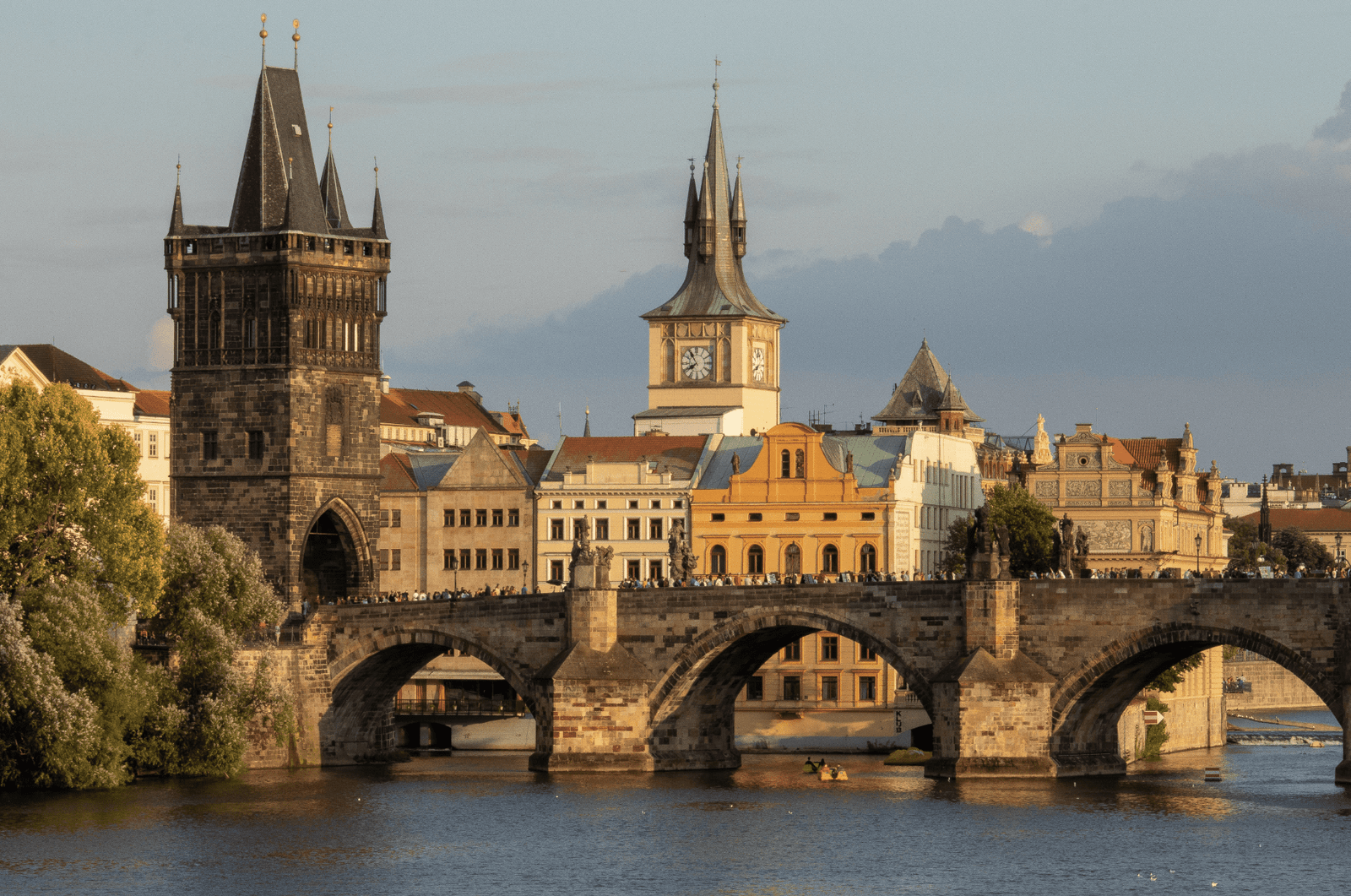
Charles Bridge
The Charles Bridge, a stunning 14th-century stone bridge that spans the Vltava River, is one of Prague’s most famous sights, and for very good reason. The bridge is embellished with 30 sculptures of saints and historical people and provides breathtaking views of the city. This is a prime photo off in Prague!
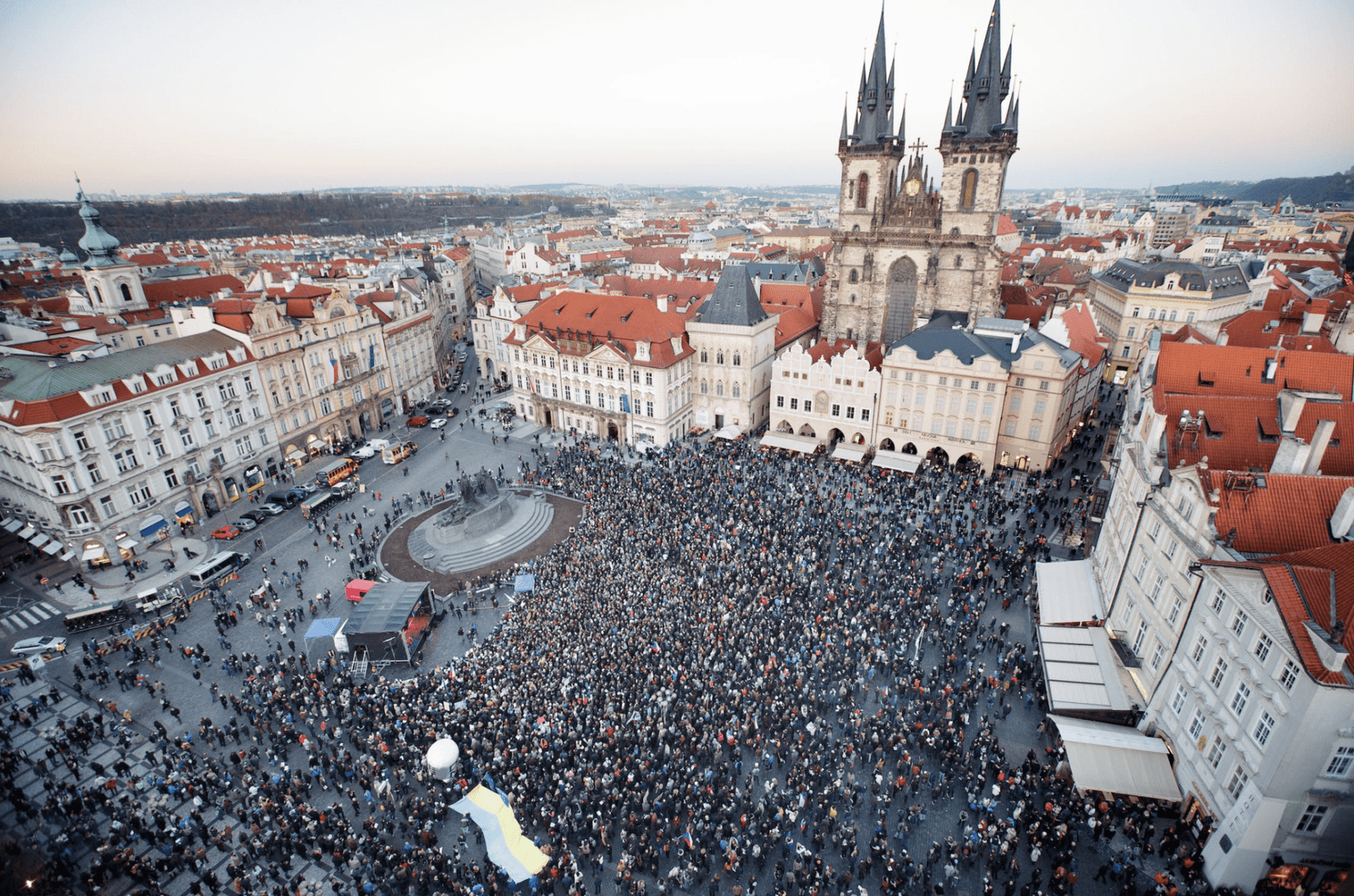
The Old Town Square
The Old Town Square is the historic core of Prague, featuring amazing Gothic and Baroque structures such as the Old Town Hall and the Church of Our Lady before Tn. The area also is home to the well-known Astronomical Clock, which dates from the 15th century. This is one of the best places to explore in Prague!
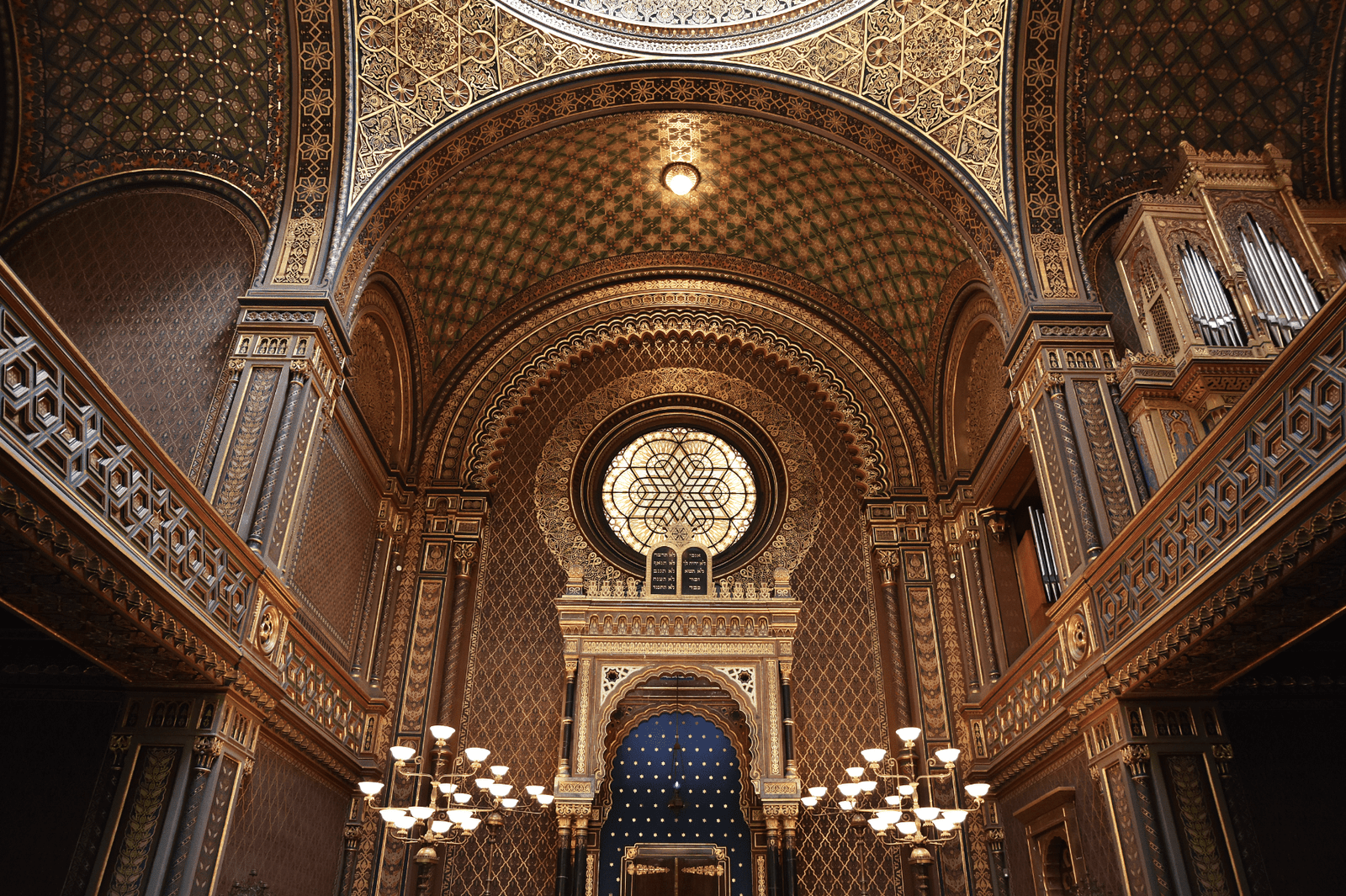
The Jewish Quarter
The Jewish Quarter, also known as Josefov, is a historic area in Prague that was formerly the hub of the Jewish population. There are many synagogues in the region, including the Spanish Synagogue and the Old-New Synagogue, Europe’s oldest surviving synagogue.
The Petrin Tower
The Petrin Tower is a 63-meter-tall tower that provides panoramic views of the city. It is situated on Petrin Hill, a lovely park that is popular with both residents and visitors. This is a great place for photography opportunities!
Wenceslas Square
Located in the centre of Prague, Wenceslas Square is a lively economic and cultural center with numerous stores, restaurants, and theaters. The National Museum is located on the plaza named after Saint Wenceslas, the patron saint of Bohemia.

John Lennon Wall
There is a colorful, fun wall in Prague known as the Lennon Wall, also known as the John Lennon Wall. This wall has been covered with John Lennon-inspired graffiti, Beatles song lyrics, and other works of art since the 1980s that make social and political statements.
Prague Beer Museum
With over 30 distinct beers from tiny Czech brewers, the Prague Beer Museum is a popular site for beer aficionados.
The Museum of Communism
With exhibits ranging from propaganda posters to surveillance apparatus, the Museum of Communism provides an intriguing insight into life in Czechoslovakia under communist control.
The Franz Kafka Museum
The Franz Kafka Museum is devoted to the life and work of the great Czech writer, with exhibitions examining his life, literature, and legacy.
Wallenstein Palace
The Wallenstein Palace is a stunning Baroque palace in Prague’s Lesser Town area. The term “galleries” refers to the many different types of museums in the United States.
The Powder Tower
The Powder Tower is a Gothic tower that was previously used as a gunpowder stockpile. It is now a renowned tourist destination with breathtaking views of the city.
St. Nicholas Church
Located in the center of Prague’s Old Town, St. Nicholas Church is a stunning Baroque church. The church is famous for its elaborate interior and spectacular paintings.
Museum of Decorative Arts
The Museum of Decorative Arts houses a collection of pottery, glassware, and other ornamental pieces going back to the Middle Ages from all over the world.
Golden Lane
The Golden Lane in Prague is a charming lane of colorful cottages located inside the grounds of the Prague Castle. The houses were originally used as accommodation for the castle guards. If you’re going to the castle, you should definitely also stop at Golden Lane. This charming little road of historic little buildings has been converted into stores and displays.
Old Jewish Cemetery
The Old Jewish Cemetery is a historic cemetery in Prague’s Jewish Quarter. Many renowned people from Prague’s Jewish community are buried there.
National Gallery in Prague
The National Gallery in Prague is the Czech Republic’s largest art museum, housing works by well-known Czech painters as well as European masterpieces such as Picasso and Van Gogh.
Prague Zoo
Located on the banks of the Vltava River, the Prague Zoo is home to approximately 600 kinds of animals from all over the world.
Prague 2-Day Itinerary:
Do you only have a short two days in Prague? Here’s a great suggestion for a short itinerary in Prague:
Day 1:
Morning: Visit the old Vyehrad fortification, which has a view of the Vltava River, to start the day. Enjoy the lovely views of the city while seeing the stronghold and its Gothic-style church, cemetery, and park.
Afternoon: Visit the Museum of Decorative Arts, which has a collection of pottery, glassware, and other ornamental items from all around the world, after you finish lunch. The museum often hosts transient displays that highlight the creations of modern designers and artists.
Evening: Conclude your day with the Žižkov Television Tower, a distinctive structure that has an observation deck, a restaurant, and a bar inside. The view of Prague is beautiful from the tower, especially around dusk.
Day 2:
Morning: Visit the Klementinum, a collection of old structures that includes the National Library of the Czech Republic and a number of other organizations, to start the day. Learn about the complex’s interesting history and architecture by taking a guided tour.
Afternoon: For beer enthusiasts, the Prague Beer Museum is a popular stop after lunch. In addition to a museum display that examines the history of beer in the Czech Republic, the museum provides a range of over 30 various beers from local Czech breweries.
Evening: Conclude your day at the Wallenstein Palace, a stunning Baroque building situated in Prague’s Lesser Town district. Take a leisurely stroll around the magnificent grounds and see the several museums and galleries located within the palace.
Prague 3-day Itinerary:
If you have 3 days in Prague, here’s the perfect itinerary for you:
Day 1:
Morning: Visit Prague Castle, one of the city’s most recognizable sites, to start the day. Discover the St. Vitus Cathedral, the Old Royal Palace, and the Golden Lane within the castle complex.
Afternoon: Visit Charles Bridge, a spectacular stone bridge built in the 14th century that provides breathtaking views of the city, after lunch. Explore the bridge and all of its statues, and don’t forget to take a leisurely stroll around Kampa Island, which is close by.
Evening: Spend your final moments of the day at Prague’s Old Town Square. Enjoy the exquisite Gothic and Baroque architecture, and don’t miss the Astronomical Clock’s hourly spectacle.
Day 2:
Morning: Early in the day, pay a visit to Josefov, popularly known as the Jewish Quarter. Explore the Old-New Synagogue and other old synagogues in the region to learn about the history of the Jewish community in Prague.
Afternoon: Visit the National Museum in the crowded Wenceslas Square after lunch. A unique look into Czech history and culture can be found at the museum.
Evening: Finish the day at the lovely Letna Park, which is perched on a hill overlooking the city. Enjoy a picnic or a leisurely walk while admiring the breathtaking views of Prague.
Day 3:
Morning: Start the day with a trip to the Museum of Communism, which provides a fascinating glimpse into life in communist-run Czechoslovakia.
Afternoon: Visit the Municipal House, a spectacular Art Nouveau structure that houses a concert venue, a café, and a restaurant, in the afternoon after eating.
Evening: To round off your day, pay a visit to the modernist Dancing House, which was created by Canadian architect Frank Gehry and Croatian architect Vlado Milunic. One of Prague’s most recognizable monuments, the building’s curved, amusing shape sticks out amid the city’s old buildings.
Prague 5-Day Itinerary:
Day 1:
Morning: Visit the MeetFactory, a modern art gallery housed in a former glass factory, to kick off your day. Visit the center’s galleries and shows, and don’t forget to look at the sculptures in the courtyard and the walls covered in graffiti.
Afternoon: Visit the DOX Center for Contemporary Art, which is located in a former factory and hosts exhibitions of modern art, architecture, and design, after you finish your meal.
Evening: End your day with a trip to the Cross Club, a unique bar and music venue featuring live music and steampunk-inspired decor.
Day 2:
Morning: Head out of the city to the nearby Divoká Šárka natural reserve to start the day. The park features hiking routes, swimming holes, and breathtaking city views.
Afternoon: Visit the eccentric Museum of Alchemists and Magicians of Old Prague after lunch to learn more about the background of alchemy and magic in Prague.
Evening: Visit the Absintherie, a pub that specialized in absinthe, to round off your day. You may attempt the traditional Czech absinthe ritual at the bar, which serves a variety of absinthes from across the globe.
Day 3:
Morning: Pay a visit to the Strahov Monastery, a stunning collection of structures that houses a library with more than 200,000 books, many of which date back hundreds of years.
Afternoon: Visit the National Technical Museum, which chronicles Czechoslovakia’s technological and technical history, after lunch.
Evening: To round off your day, stop into the Jáma Jazz Club, a quaint subterranean spot with live jazz music.
Day 4:
Morning: Begin your day with a trip to the stylish Karlin area, which was recently rebuilt following a disastrous flood. Discover the numerous cafés, stores, and street art in the neighborhood.
Afternoon: Visit the Kampa Museum, which showcases modern and contemporary works of art by Czech and foreign artists, after lunch. The Charles Bridge and the Vltava River can be seen beautifully from the museum’s location on Kampa Island.
Evening: Conclude your day by stopping by the Artl Design Store, a shop that offers handcrafted fabrics, pottery, and glass items from Czech and foreign designers.
Day 5:
Morning: First thing, head to the Vltava River and hire a paddleboat and explore the waterway on your own.
Afternoon: On Saturdays, the Náplavka farmers’ market is held on the riverfront. Visit it after lunch. The market provides a selection of handcrafted goods, street cuisine, and local vegetables.
Evening: Spend your final hour of the day in the Letná Beer Garden, a well-loved hangout for both residents and visitors. The beer garden serves a variety of Czech beers and refreshments along with breathtaking views of the city.
What are the Best Day Trips from Prague?
Karlstejn and Koněprusy Caves
Karlstejn and Koněprusy Caves are two of the most popular day tours from Prague. The castle provides breathtaking views of the surrounding landscape, while the caverns provide an intriguing peek into the underground world.
There are many amazing day excursions you can take from Prague to see the surrounding countryside and cities. Some of the ones I recommend the most for a day trip from Prague include:
Bohemian Switzerland National Park:
The Bohemian Switzerland National Park is a beautiful natural location about two hours from Prague. The park contains spectacular rock formations, deep valleys, and lush woods.
Karltejn Castle
Karltejn Castle is a Gothic castle located around 45 minutes outside of Prague. The castle, which was erected in the 14th century, previously housed the Bohemian crown treasures.
Kutná Hora
Kutná Hora is a lovely town approximately an hour outside of Prague. The Gothic architecture of the town is well-known, notably the famed St. Barbara’s Church and the Sedlec Ossuary, a chapel adorned with human bones.
Český Krumlov
Český Krumlovis a lovely village in the Czech Republic’s south, located around 2.5 hours from Prague. The historic heart of the town is a UNESCO World Heritage Site, including outstanding Baroque and Renaissance buildings.
Terezn
Terezn is a former concentration camp approximately an hour’s drive outside of Prague. The camp was utilized by the Nazis during WWII and now serves as a monument to Holocaust victims.
Pilsen
Beer lover? Visit Pilsen! Located about an hour and a half from Prague, Pilsen is home to the famed Pilsner Urquell brewery. Visitors to the brewery may take a tour and learn about the history of beer in the Czech Republic.
These day trips outside of Prague provide an excellent opportunity to discover the lovely countryside and adjacent cities.
What are the best places to stay in Prague?
Prague offers a wide variety of accommodation options, from budget hostels to luxury hotels. Here are some of the very best places to stay during your visit to Prague:

The Aria Hotel Prague
The Aria Hotel Prague is a magnificent boutique hotel in Prague’s historic Mala Strana area. The hotel has beautifully designed rooms, a rooftop garden, and a world-class spa.
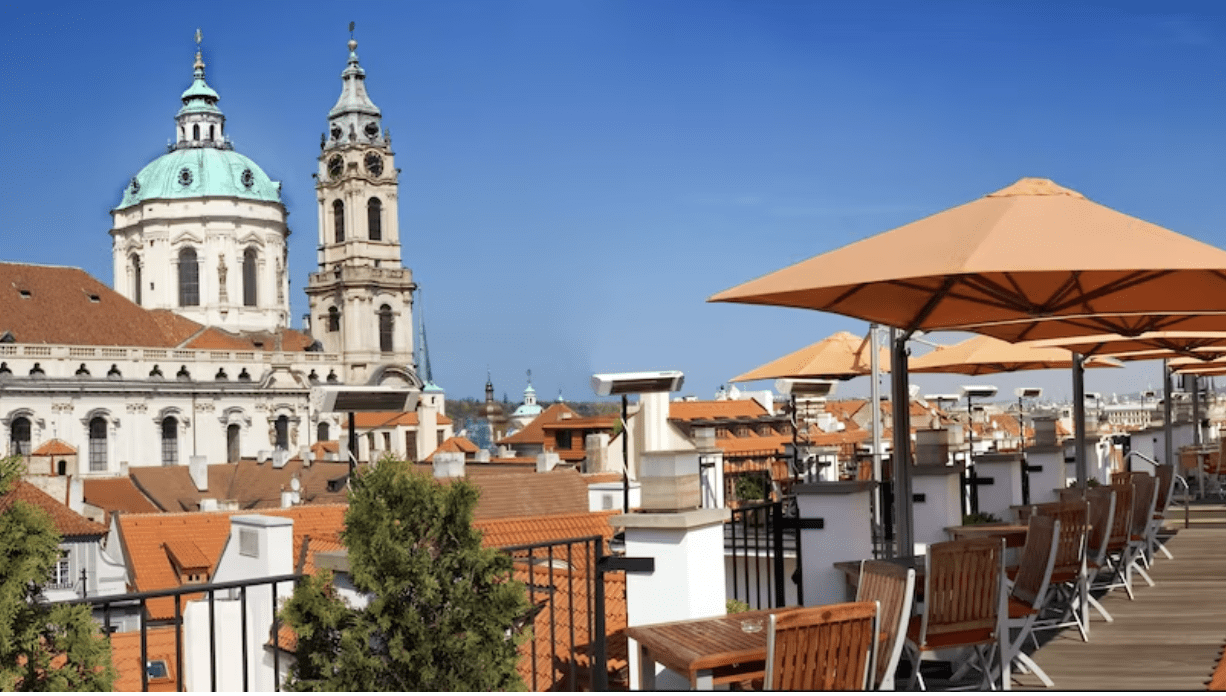
The Alchymist Grand Hotel & Spa
The Alchymist Grand Hotel & Spa is a magnificent five-star hotel located in the historic Mala Strana area of Prague. The hotel has beautifully designed rooms, a world-class spa, and a lovely courtyard area.
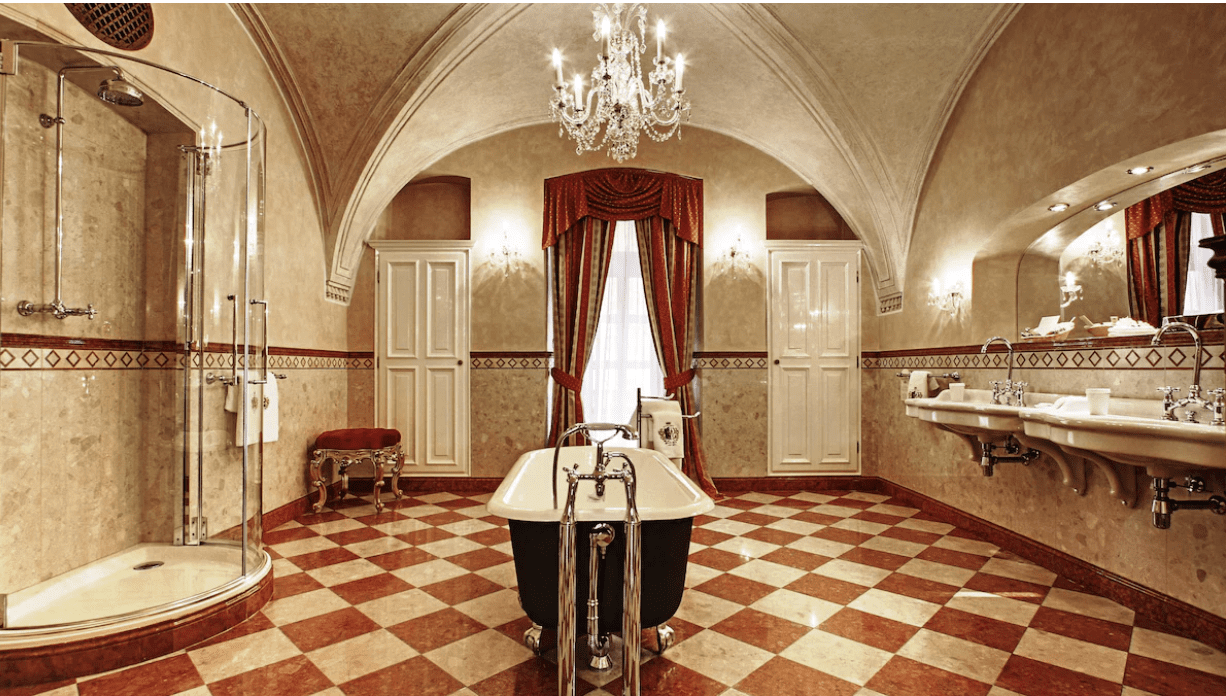
The Four Seasons Hotel Prague
The Four Seasons Hotel Prague is a luxury five-star hotel set on the banks of the Vltava River with excellent views of the city. The hotel has elegantly decorated rooms, a rooftop bar, and a world-class spa.
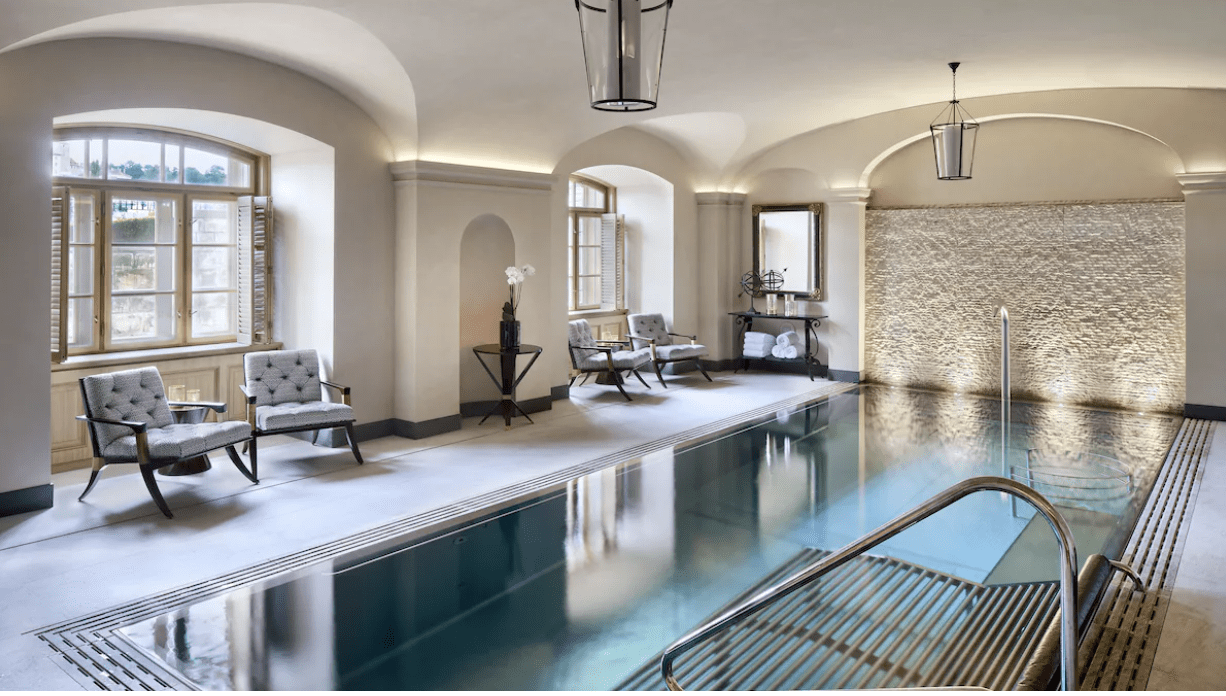
Mandarin Oriental, Prague
Located in a former 14th-century monastery, the Mandarin Oriental, Prague is a luxury five-star hotel. The hotel has tastefully refurbished rooms, an award-winning restaurant, and a world-class spa.
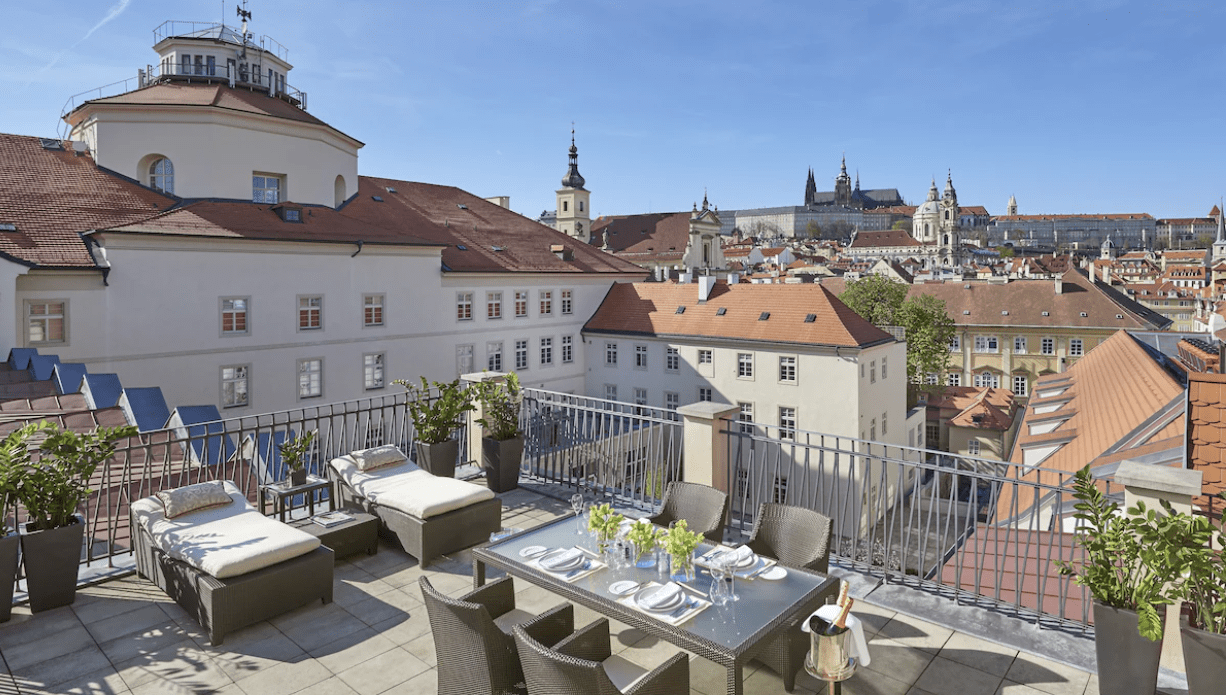
Grand Hotel Praha
Located in the middle of Old Town Square, the Grand Hotel Praha is a historic five-star hotel. The hotel has tastefully refurbished rooms, a rooftop patio with panoramic city views, and a restaurant offering traditional Czech cuisine.
These hotels are well-known for their lavish facilities, outstanding service, and prominent positions in some of Prague’s most historic and picturesque districts.
Prague has a range of accommodations to suit different preferences and budgets. When choosing a place to stay in Prague, consider the location, amenities, and price, and choose an option that fits your needs and interests.

Why is travel insurance important while traveling to Prague?
Purchasing travel insurance is essential while visiting Prague or any other destination since it protects you financially in the event of an unforeseen catastrophe that might disrupt or spoil your trip. Here are some of the reasons why travel insurance is essential:
Medical emergencies
If you become ill or injured while visiting Prague, travel insurance can cover your medical costs, such as hospitalization, doctor’s appointments, and prescription medicine.
Trip cancellations or interruptions
Travel insurance can cover trip cancellations or interruptions caused by unanticipated events such as extreme weather, natural catastrophes, or unexpected personal situations.
Lost or stolen baggage
Travel insurance will pay you for lost or stolen luggage, as well as any personal possessions lost or damaged while traveling.
Travel delays
If your flight is delayed or canceled, travel insurance can cover any additional costs, such as meals and lodging, that you may incur as a result of the delay.
Emergencies
Travel insurance can provide coverage for emergency medical evacuation to a hospital with proper medical treatment in the case of a major medical emergency.
Looking for a great travel insurance provider that is affordable but offers great coverage? My favorite is Safetywing Travel Insurance.
What to pack on a trip to Prague?
When preparing for a vacation to Prague, keep the weather and your planned activities in mind. Here are some things to think about packing:
Comfortable walking shoes
Because Prague is best experienced on foot, bring comfortable walking shoes or sneakers.
Cash in the Local Currency
While many establishments in Prague take credit cards, having extra cash on hand for minor purchases and tipping at restaurants is usually a smart idea.
Camera Equipment
Because Prague is a wonderful city with amazing architecture and charming streets, carry a camera with you to document your experiences.
Dress for the weather
Prague has four different seasons with contrasting temperatures, with warm summers and chilly winters. Pack suitable clothing for the weather, such as lightweight clothing and sunscreen for summer and warm layers and a waterproof jacket for winter.
Electrical adapters
Bring a universal adapter for your electronic equipment if you are coming from a nation with various electrical outlets.
Travel handbook or maps
With so much to see and do in Prague, carry a travel guidebook or maps to help you explore the city and locate the greatest sites and attractions.
Prescription Drugs
If you use prescription drugs, carry enough to last the duration of your vacation in their original containers.
Daypack / Backpack
Bring a daypack or bag to transport your camera, water bottle, food, and other necessities while touring the city.
Packing for a vacation to Prague should contain comfortable walking apparel and shoes, appropriate devices and adapters, cash and credit cards for shopping, and any prescriptions or travel necessities.
I hope you have an amazing visit to Prague!
You Might Also Like:
Perfect Milan 2-Day Itinerary: Best of Milan
The BEST Places to Stay in New York
Exciting Monaco-Based Events You Won’t Want to Miss Next Summer and Fall
The Best Places to Visit in Tuscany, Italy for a Memorable Roadtrip
Positano, Italy: A Travel Guide to this Gem on the Amalfi Coast

GREAT PRAGUE CAR RENTAL DISCOUNTS WITH DISCOVER CARS:
PIN FOR LATER

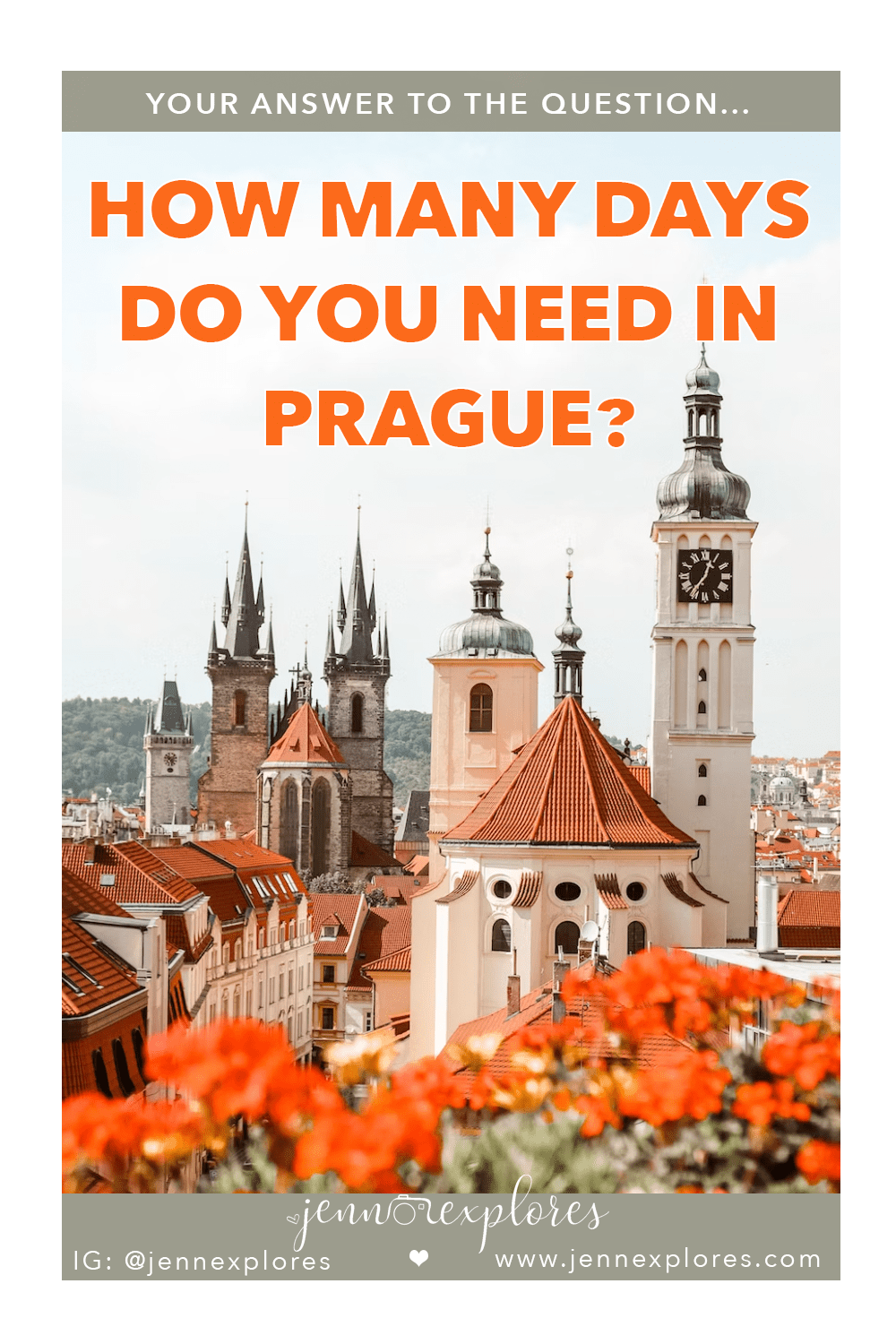


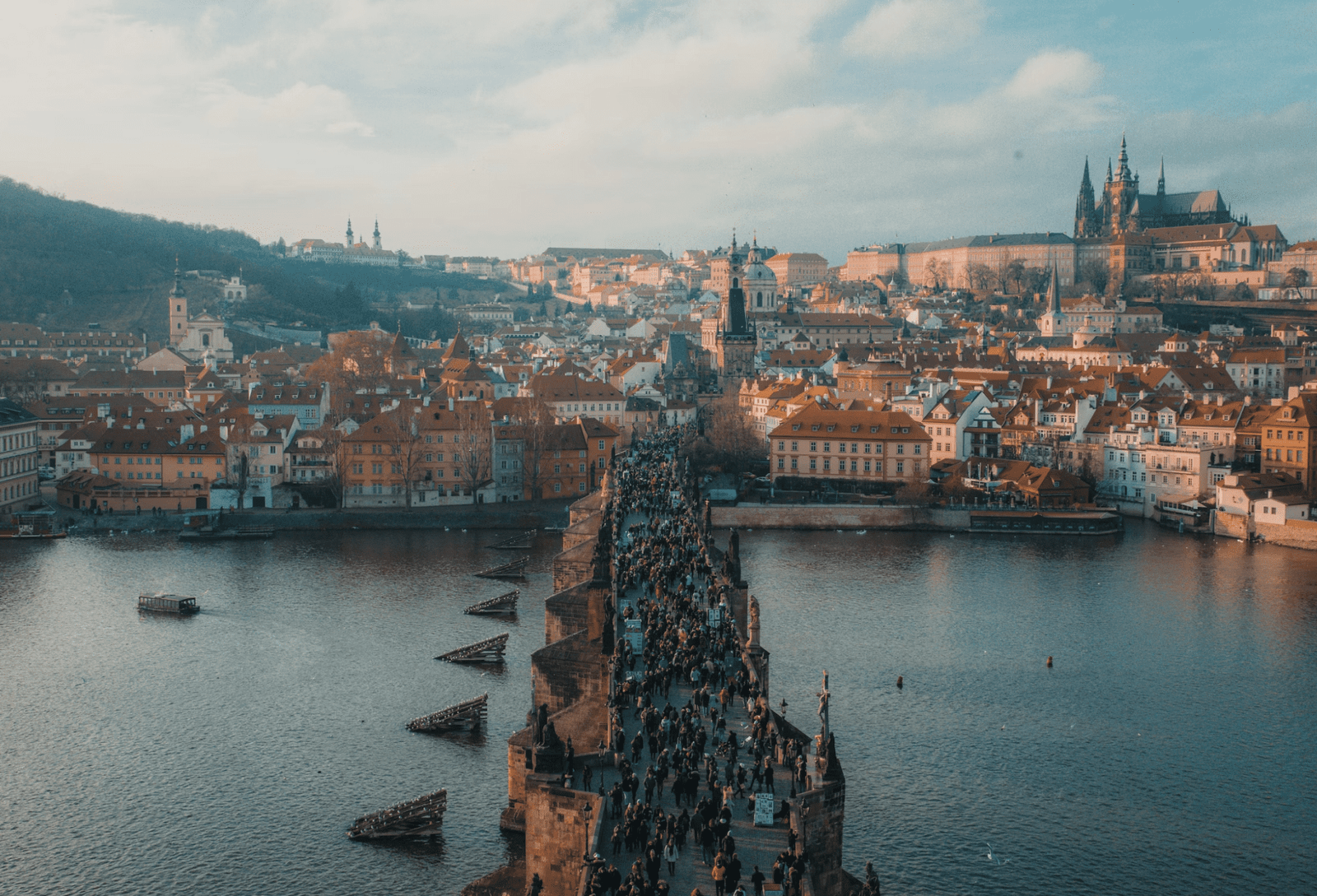


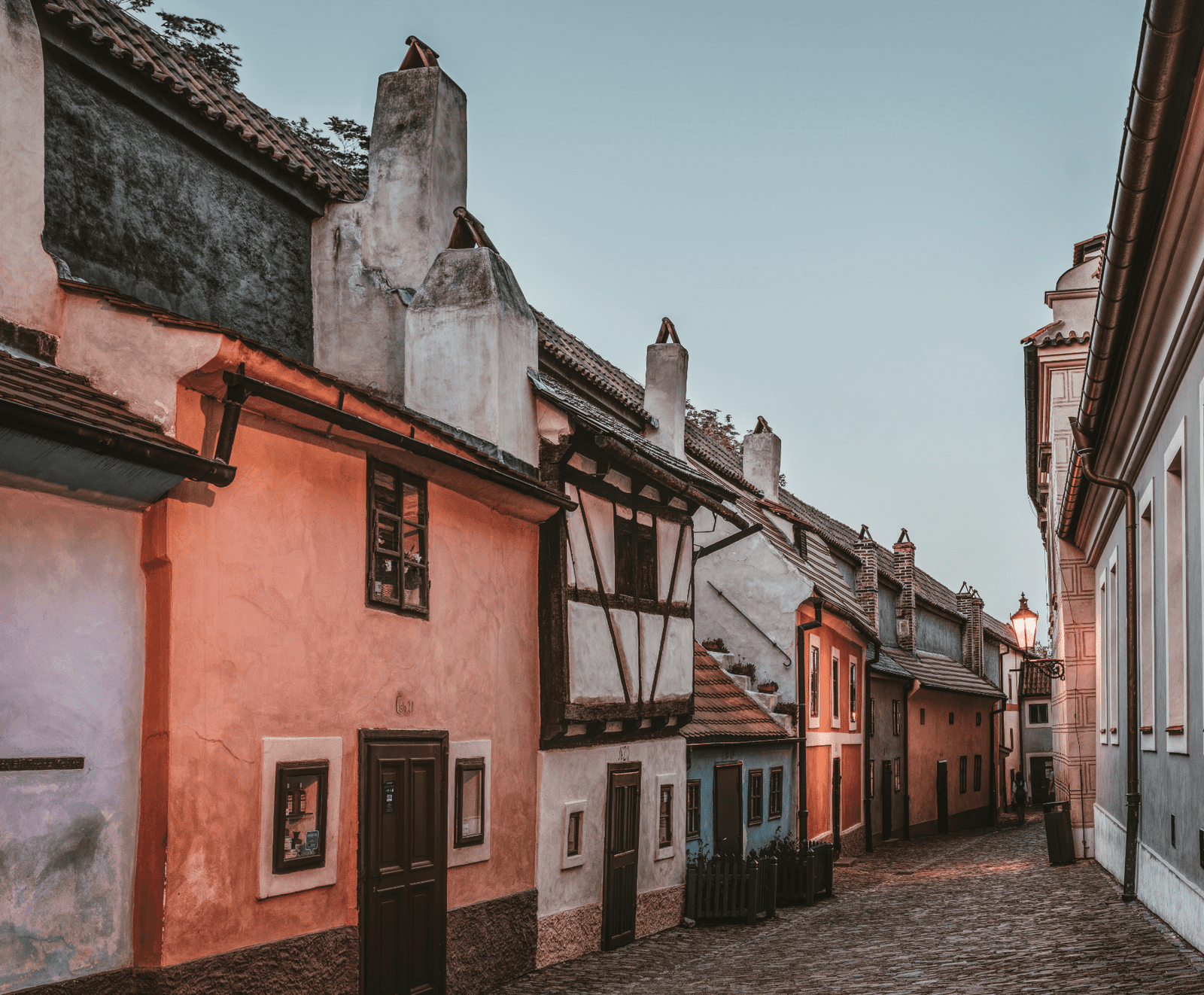
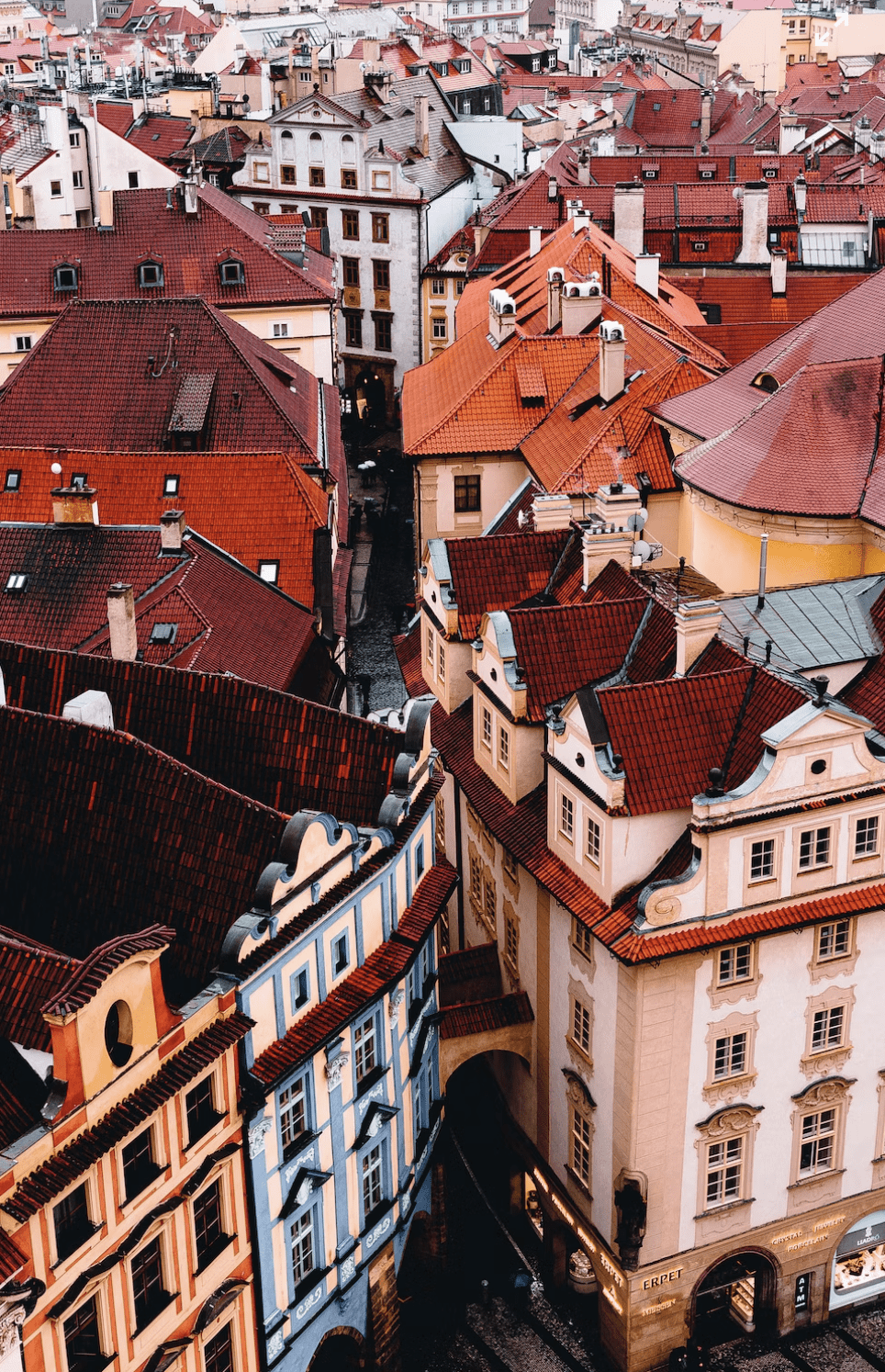
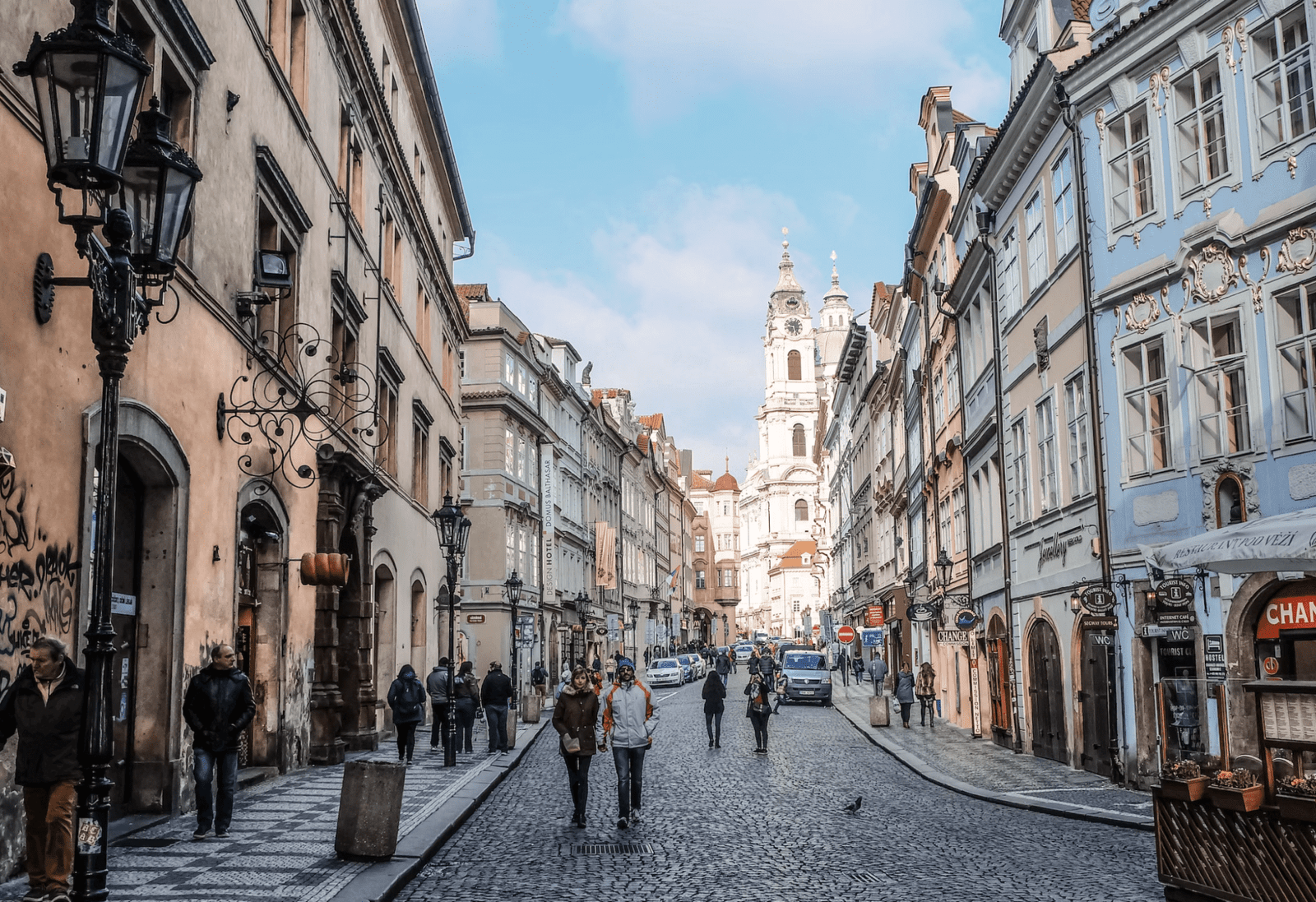

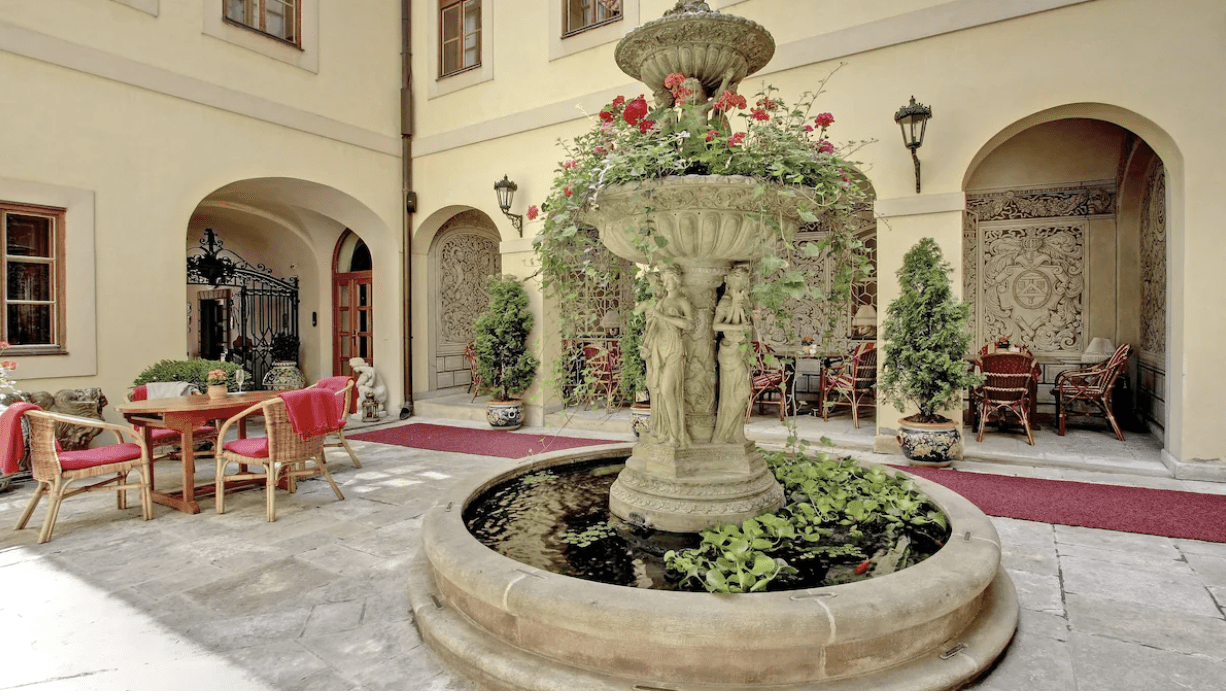

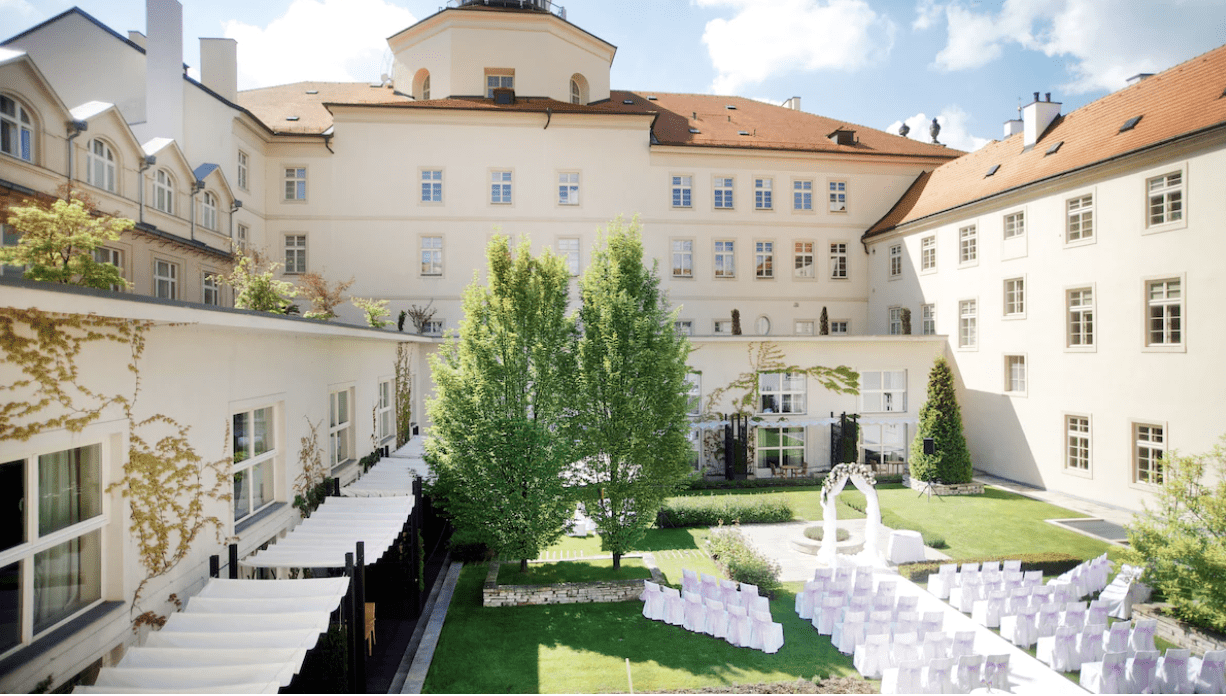
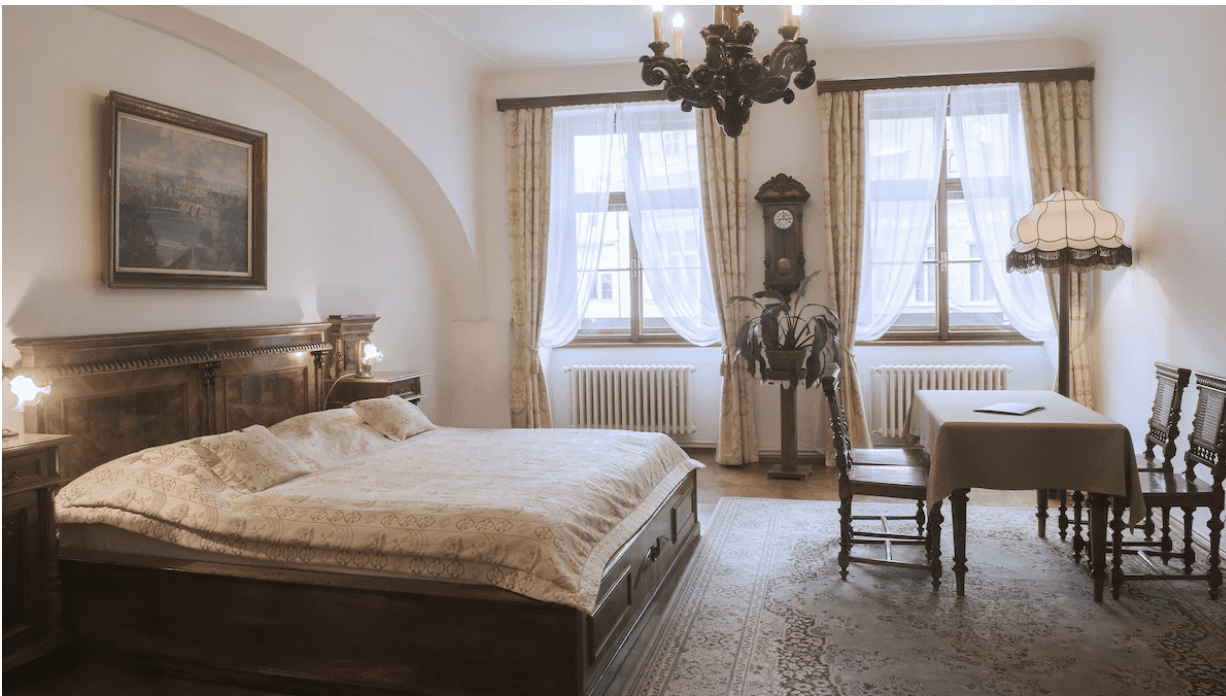












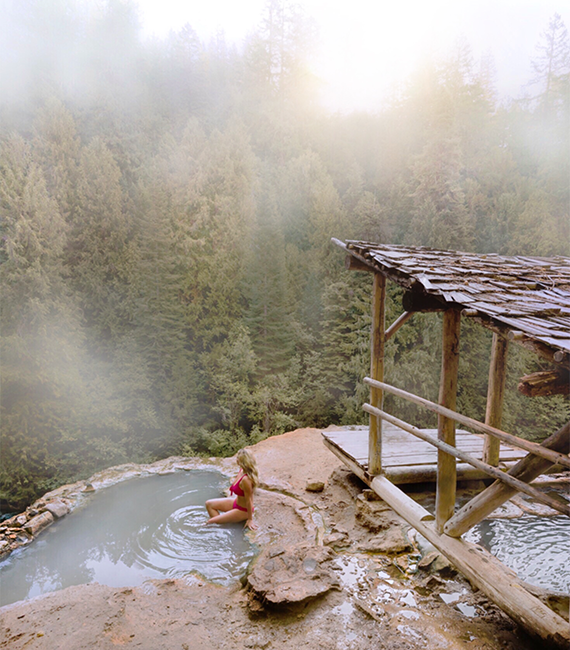



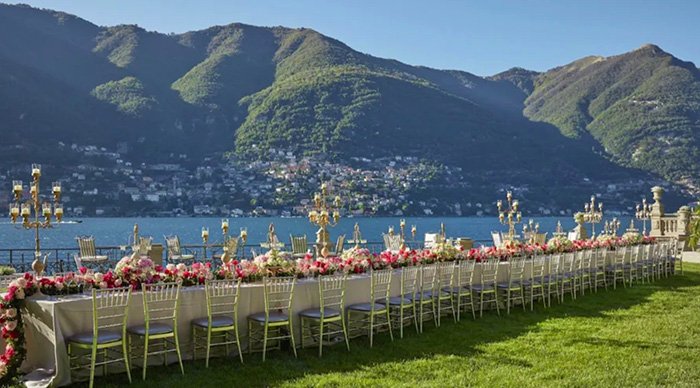


leave me a comment